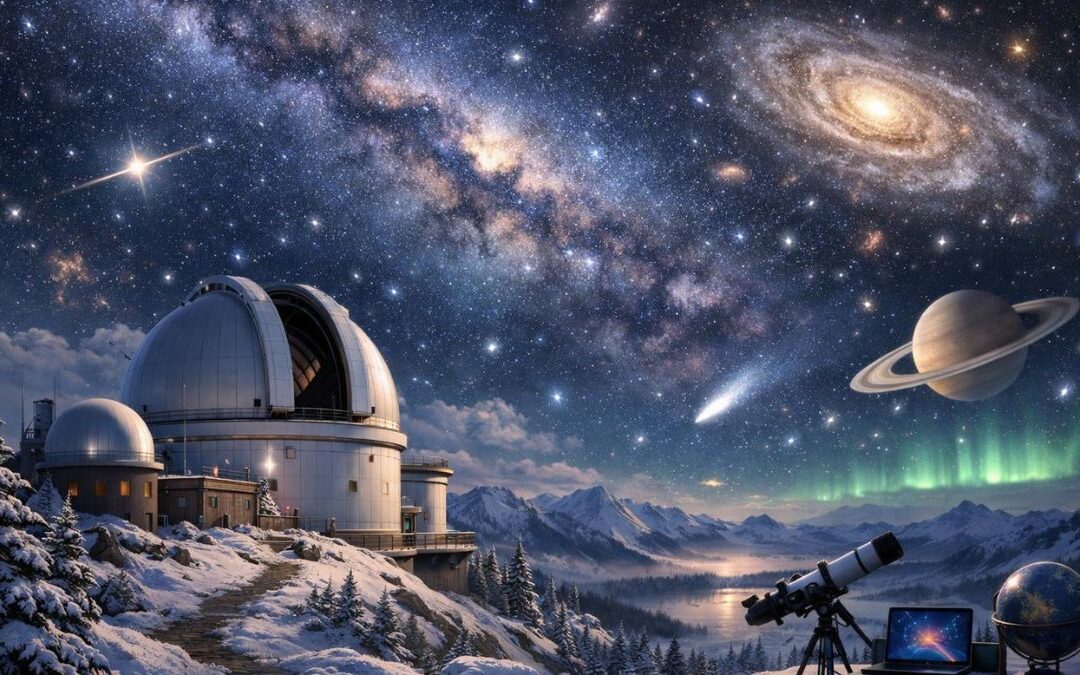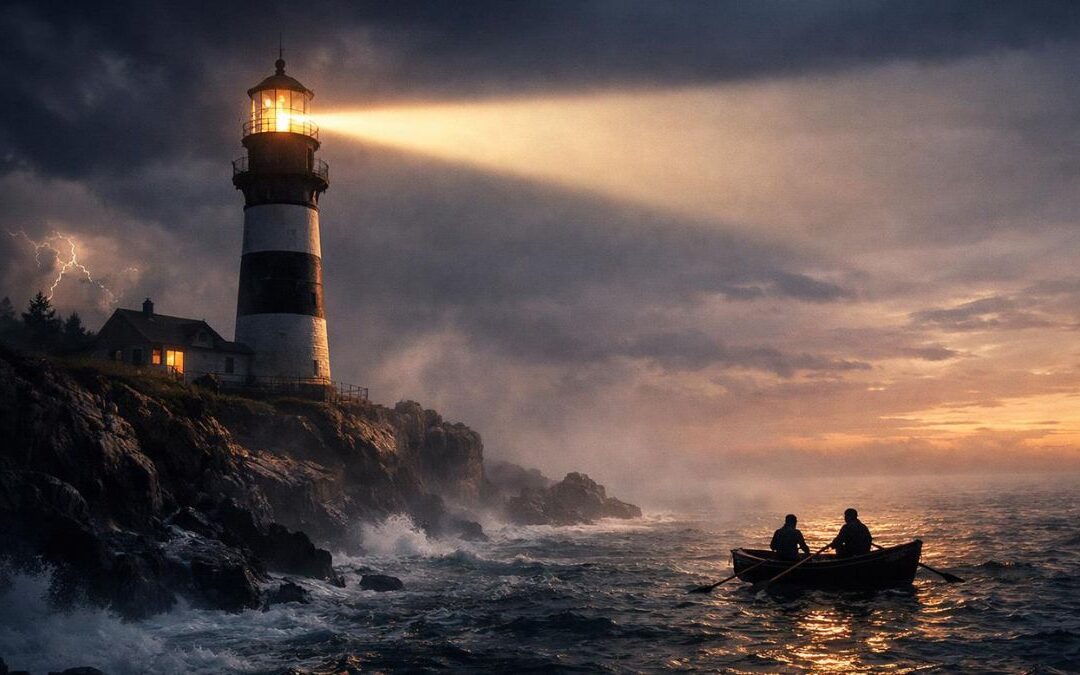Spark Discussion
What if I told you that every single snowflake that has ever fallen was a frozen autobiography of its journey through the sky? Think about that for a second. Not just a pretty piece of ice, but a tiny, intricate, six-sided memoir, a physical record of its wild tumble from a high-altitude cloud all the way down to your mitten. We’ve all caught them on our tongues as kids and cut their shapes out of folded paper, but the real magic is so much deeper and more elegant than you can imagine. The journey to understand the incredible science of snowflakes is a trip that takes us from the quirky behavior of a single molecule to the chaotic dance of the atmosphere, and it reveals one of the most beautiful examples of how simple rules can create infinite complexity.
It all starts with the humble, and frankly kind of weird, water molecule. You know it as H₂O.
It’s made of one big oxygen atom and two smaller hydrogen atoms, and they don’t sit in a straight line. They’re stuck together in a V-shape, kind of like a Mickey Mouse head with the oxygen as the face and the hydrogens as the ears. This shape is crucial. Because of how the electrons are shared, the oxygen “face” is slightly negatively charged, and the hydrogen “ears” are slightly positively charged. And just like tiny magnets, the positive ears of one water molecule are irresistibly attracted to the negative face of another. This attraction is called a hydrogen bond, and it’s the secret sauce of a snowflake. When the temperature drops and water begins to freeze, these bonds lock the molecules into place, but not in a jumbled mess. They arrange themselves into the most stable, low-energy configuration possible: a beautiful, six-sided honeycomb pattern. This hexagonal lattice is the fundamental law of the snowflake universe. It’s the grammar, the rulebook. No matter how wild and crazy the final design gets, it is all built on this foundation of six.
So, how does this hexagon get born? It doesn’t just pop into existence. High up in a freezing cloud, you have billions of water molecules zipping around as vapor in supercooled air—air that’s below freezing but where the water hasn’t turned to ice yet because it has nothing to grab onto. It needs a seed. This can be a microscopic speck of dust, a grain of pollen, a bit of volcanic ash, anything for that first fussy water molecule to cling to. Once that happens, other molecules rush in, find their spots in the hexagonal pattern, and a tiny, nascent ice crystal is born. At this point, it’s usually just a simple, almost boring, hexagonal prism. This is the blank first page of our autobiography. The story hasn’t been written yet.
Now comes the fun part. This baby ice crystal, our little hexagonal seed, starts its long journey falling through the cloud. As it tumbles and drifts, it passes through different atmospheric neighborhoods, each with its own unique temperature and humidity. These two factors—temperature and humidity—are the ink that writes the story on our crystal. The shape the snowflake takes is a direct, physical recording of the conditions it experiences, moment by moment. A physicist named Kenneth Libbrecht has spent his life studying this, and what he found is absolutely mind-blowing. The way a crystal grows is exquisitely sensitive to its environment.
Imagine our little hexagon falling. It enters a zone where the temperature is around -2°C (28°F). In these conditions, the crystal starts to grow into a thin, flat, six-sided plate. Simple, elegant, like the prologue to a book. But then, it drifts into a colder patch, maybe around -5°C (23°F). Suddenly, the growth pattern completely changes! The crystal stops growing flat and starts shooting out long, slender needles or hollow columns from its corners. It’s a dramatic plot twist in our snowflake’s life story. Then, as it continues to fall, it hits the jackpot: a region that’s much colder, around -15°C (5°F), and also rich with moisture. This is the sweet spot. This is where the magic happens. In these conditions, the six corners of the crystal, which stick out just a tiny bit farther into the humid air, start to grow very, very fast. As they shoot outwards, their corners in turn stick out more, so they grow faster, sprouting side-branches. And the corners of those side-branches do the same. This runaway process, called branching instability, creates the classic, beautiful, fern-like stellar dendrites we all know and love. This is the epic, action-packed climax of the autobiography.
Now, you might be wondering, “Okay, but why are the six arms so similar to each other?” It’s because as the snowflake tumbles and spins, each of its six arms is experiencing the exact same atmospheric journey at the exact same time. They are like identical sextuplets all going to the same schools, eating the same meals, and living through the same weather. The left arm can’t grow a long branch unless the other five do too, because they are all passing through that same little pocket of high humidity together. They are a perfectly synchronized team, and the result is that breathtaking six-fold symmetry.
This brings us to the big, famous question: is it really true that no two snowflakes are alike? Well, for all practical purposes, the answer is a resounding yes. The chances of two complex, multi-branched snowflakes being identical, molecule for molecule, are not just small; they are astronomically, incomprehensibly small. A typical snowflake contains about a quintillion (1018) water molecules. The number of ways to arrange them is a number so vast it makes the number of atoms in the entire universe look like pocket change. Now, add to that the fact that the journey each snowflake takes is utterly unique. The chaotic swirling of the air means that the exact path—and therefore the exact sequence of temperatures and humidities it experiences—will never be repeated. It’s a unique signature. Now, could two very, very simple hexagonal prism crystals be identical when they are first born? Theoretically, yes. But those aren’t the intricate beauties we marvel at. So, you can feel safe telling people the old adage is true.
Ultimately, the science of snowflakes is more than just a cool collection of facts. It’s a profound lesson in how the universe works. It’s a perfect example of what scientists call emergent complexity. You start with a few incredibly simple rules—the V-shape of a water molecule and its desire to form six-sided bonds—and from those simple rules, an almost infinite variety of complex, intricate, and beautiful structures can emerge. There is no blueprint, no master designer telling each crystal where to put its branches. The beauty literally creates itself, emerging naturally from the laws of physics. It’s a story written by the sky, and every single flake is a unique masterpiece. The science doesn’t diminish the wonder; it magnifies it.
This process of simple rules creating endless variety is everywhere in nature, from the branching patterns of trees and rivers to the jagged shapes of coastlines and mountains. What other natural patterns have you always been curious about? Let me know in the comments below!











0 Comments